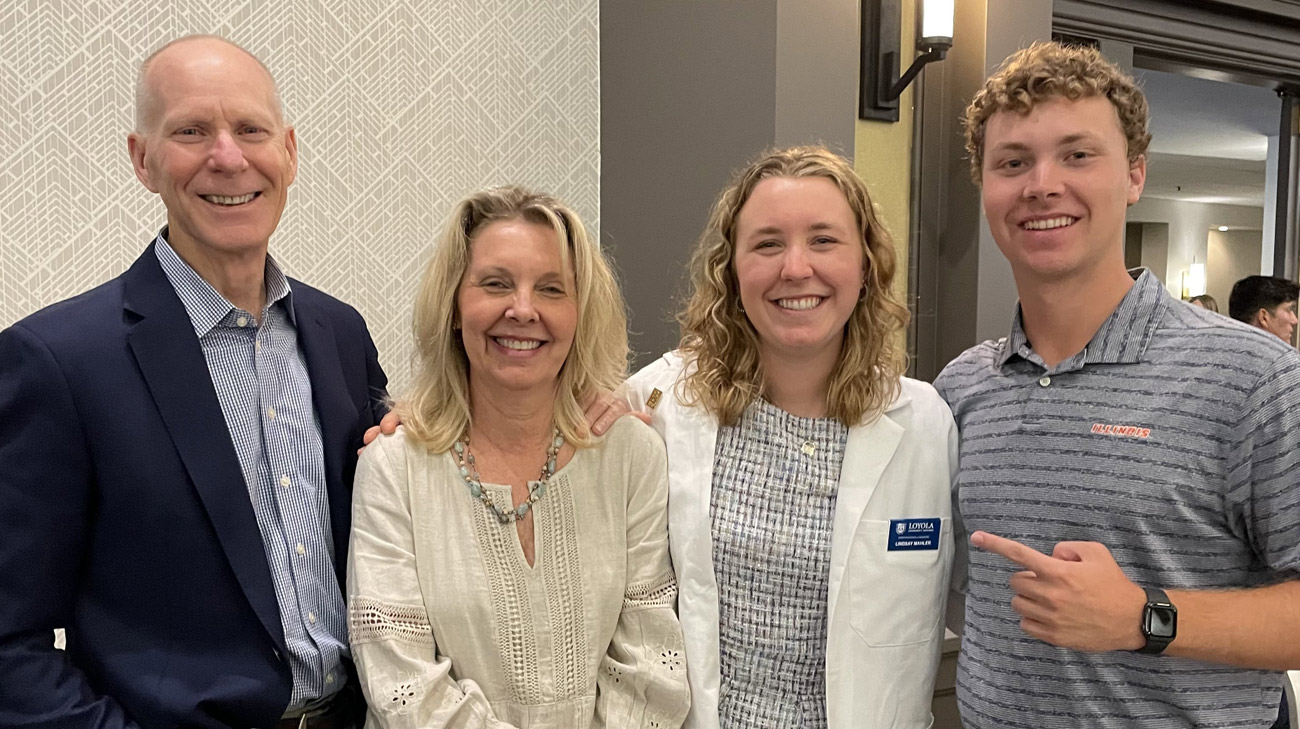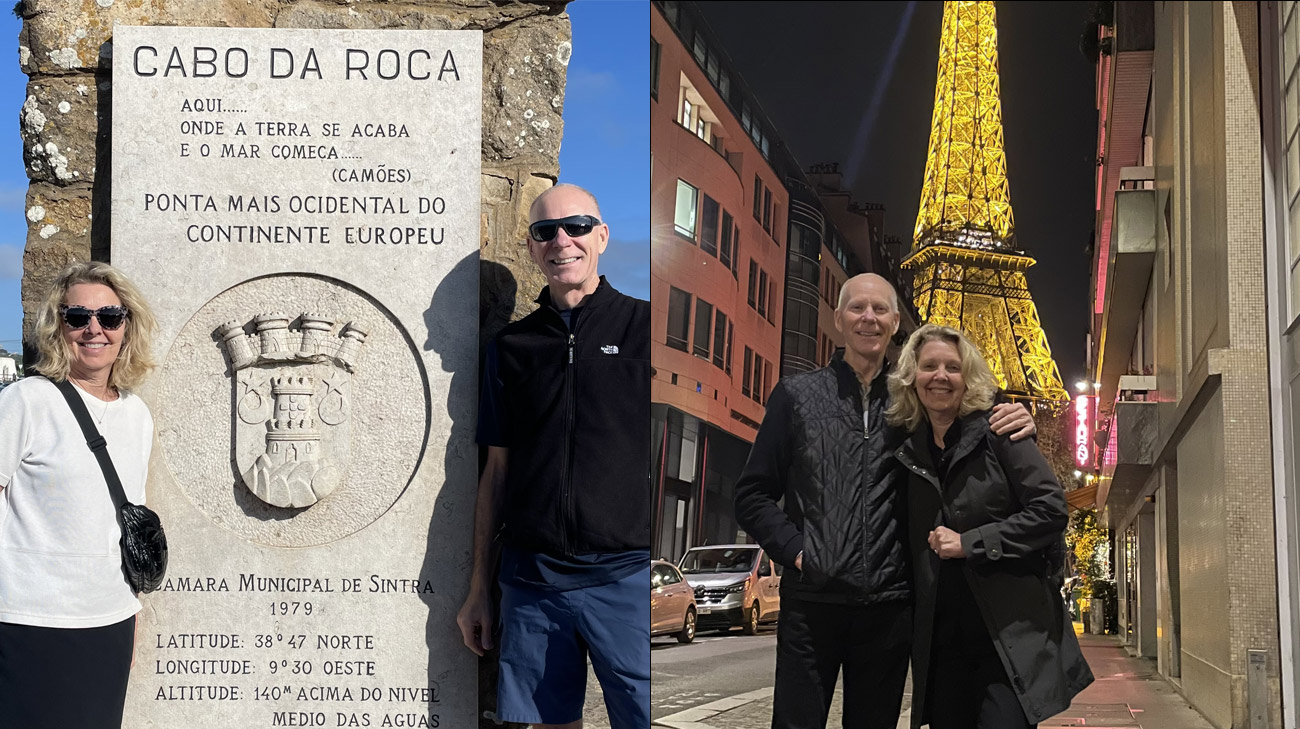
Florida resident Andy Mahler knew that having a cracked tooth pulled, a minor procedure for most people, could be dangerous for him. In 2016, he was treated for a head and neck cancer, which included 33 radiation sessions that left his jaw fragile. The condition, known as mandibular osteoradionecrosis, can occur when radiation damages the blood supply to the bone, impairing its ability to heal and resist infection. The constant presence of natural bacteria in the mouth further increases the risk when previously irradiated bone becomes exposed.
In late 2023, after developing an infection in the cracked tooth, it was recommended that Andy have it pulled. He consulted with his radiation oncologist and oral surgeon and then followed the standard protocol of 20 pre-extraction hyperbaric oxygen therapy (HBOT) sessions and 10 post extraction HBOT sessions. “Everyone said that this protocol typically had good outcomes, and post extraction, the oral surgeon thought everything looked great,” Andy says.
“But I wound up with a more serious infection anyway, and the bone started to deteriorate. I knew in advance that if I had my tooth pulled and my jaw started to fall apart, it would mean significant heavyweight surgeries and probably a bad outcome including facial deformity, continued ongoing infections, and loss of mobility in the leg that they take bone from. Really ugly stuff. I was pretty much freaking out,” he says.
Andy, who owns a marketing and technology services business, is accustomed to conducting research and began looking into treatments and experts. He met with surgeons at a couple of highly respected medical centers. “They were brilliant, but they only did three or four of these cases a year, and they were all the heavyweight version,” he says. Then, in May 2024, he came across a case study by Michael Fritz, MD, Section Head of Facial Plastic and Reconstructive Surgery at Cleveland Clinic’s Head and Neck Department.
The medical journal article detailed a new procedure called anterolateral thigh fascia lata (ATLFL) rescue flap surgery, developed by Dr. Fritz and his team. The surgery takes a thin flap with a healthy blood supply from the deep fascia of the thigh – a strong, elastic sheath surrounding the thigh muscles. The flap is used to cover and restore blood supply to bone defects after the dead tissue is removed. The surgeons obtain access to recipient facial through very small hidden incisions, 3-to-4-centimeters long, at the patient’s jaw or in front of the ear, and these are then connected to the blood supply of the thigh by tunnelling the vessels from the mouth.
“The case described in the article was incredibly similar to mine,” Andy says. He reached out to Dr. Fritz’s office. “His next available appointment wasn’t until Sept. 22, and this was May 5. I told them that if he knew my story, he would probably want to see me earlier. I wrote it up and faxed it to him, asking if he thought I was a good candidate for the surgery. His office called me back and said, ‘He can see you on Friday.’ I met with him in Cleveland on May 10.”

Just a few months after the surgery, Andy and his wife, Lisa, have started travelling again.
On June 18, 2024, Dr. Fritz and his team performed a 5 ½- hour rescue flap procedure, which Dr. Fritz describes as “like a cardiac bypass on the mandible. We reroute blood vessels to the jaw to give tissue a new blood supply.” Initially it seemed like everything had gone well. But a few days later, Andy says, “I could tell that Dr. Fritz was worried about it. When I came back a week later for my first post-surgical follow-up, I learned it hadn’t taken.”
Andy and Dr. Fritz agreed to try again. The next day, June 28, a second surgery was performed, and it was successful. “Everything was good that time,” Andy says.
Dr. Fritz notes that Andy is among the 2% to 3% of patients for whom rescue flap surgery does not work the first time. “Usually, the tissue lives and does what we need it to do,” he says. “But when he came in 10 days later, it wasn’t alive. Radiated blood vessels sometimes fail with this procedure, and we have no idea what causes it. In this case, he obviously had a significant infection when he returned in follow-up, and this may have played a role. When it happens, we have to look that person in the eye and say, ‘I’m sorry. We have to do it again.’ We added him to our schedule and redid it right away. Now, he’s doing incredibly well. He’s had one of the best outcomes I’ve ever seen with the bone graft after one of the roughest rides. Even if the surgery doesn’t go perfectly, we make sure it ends perfectly.”
Dr. Fritz credits teamwork for Andy’s ultimately successful outcome. “We’ve got a great team of microvascular reconstructive surgeons that specialize in this procedure: Brandon Prendes, MD, Sara Liu, MD, Peter Ciolek, MD, and myself,” he says. “Surgeries are routinely performed by two of us simultaneously, which dramatically shortens the patient’s time under anesthesia and gives us the best outcomes. The four of us do 40 of these procedures a year on patients from all over the world.” The team’s new grading system for osteoradionecrosis, which was recently published, can be applied to a wide range of cases in which surgeons’ decisions have been hampered by existing guidelines, he says. He predicts that soon, the rescue flap procedure will be performed commonly around the country, becoming the new standard of care for this condition. “People I’ve trained are starting to do it with great success.”
With this procedure, there is less morbidity to patients than with a skin graft, Dr. Fritz says, and it is highly effective in stopping the disease. “Since the flap is rich in blood supply, it ensures robust oxygenation to the underlying bone and graft tissue to promote healing. It also allows for effective antibiotic delivery to eliminate any remaining infection. In addition, the minimal access technique we use, hidden in front of the ear or jaw, does not impact future reconstruction surgery, should that become necessary.”
Dr. Fritz praises Andy’s willingness to have the surgery twice. “He’s not had the smoothest path, but he’s a super smart, active, dynamic guy, and he gets it,” Dr. Fritz says. “With the ups and downs of healing, you just have to keep going.”

Enjoying every moment with his son, Kyle and daughter, Lindsay.
Andy says that although having the second surgery took “a leap of faith,” he trusted Dr. Fritz. “He was very professional, and he took it personally. His partner was wonderful, too, and so were the residents and nurses. I was confident they would get it right.”
After surgery, he was on an intravenous antibiotic for six weeks as his jaw continued to heal. “I ate mostly on the left side of my mouth for the longest time, but now I chew on both sides,” he says. “My recent CT scan was clean.”
Before the procedure, Andy says, “I was traveling, golfing, etc., but all with the weight of the world on my shoulders – the knowledge that I had an infection that could not be killed, and the recommendations of doctors that I might be on antibiotics for life, all in the name of staving off the infection. I have no doubt that all of that would have come with significant complications and even more ‘weight.’ Fast forward to a few months out of the surgery, and all is good. Life has gone from hyperbaric oxygen treatments and worry over facial disfigurement and shortened life spans, to freedom to enjoy everything that is good in this world, of which there is a lot. And, of course, most importantly, to be fully present with the people that you love.”
He and Lisa have resumed traveling. “We went to a family reunion in California, visited a friend on a boat in the Chesapeake Bay, and I did a Peloton bike ride in New York City. We went to San Francisco and visited Portugal. None of that would have been possible before the surgery.”
The couple praises Dr. Fritz and Andy’s Cleveland Clinic care team. “I was impressed by their warmth,” Lisa says. “And I knew that Dr. Fritz would be available if we needed him. The hospital staff was out of this world. I said to Andy that if I ever need medical care, or if he does, we are going straight to Cleveland Clinic.”
Related Institutes: Head & Neck Institute

